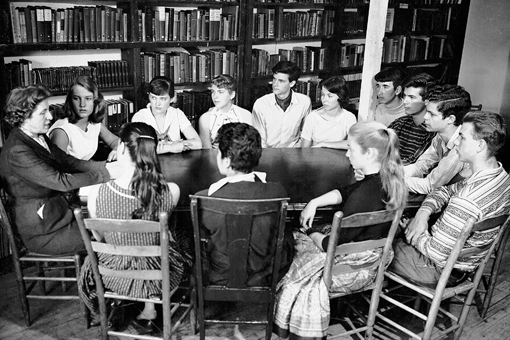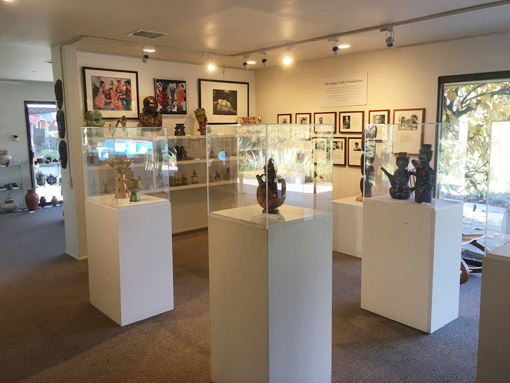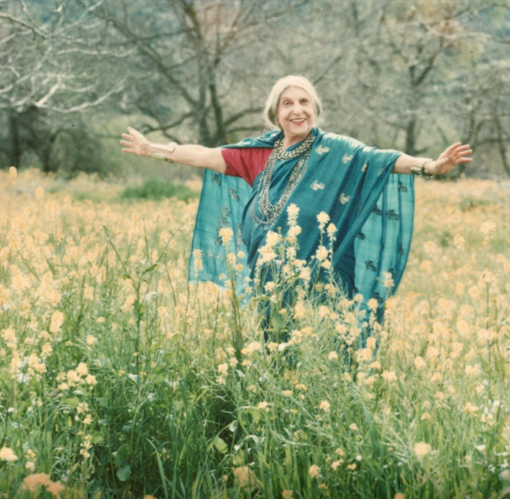|
Foster educational centers that nurture individual intellectual and artistic growth, positioned on preserved California land, where all forms of life are respected.
Continuing to globally serve our community by fostering a lifelong
commitment to learning, inspired by our inclusive legacy in Education, the Arts, and Land Stewardship of 500+ acres. |

|
 |
|
The Founders of the Besant Hill School (formerly Happy Valley School) embraced the Socratic method of teaching to develop in students inquiring, rather than acquiring, minds. They developed an integrated approach to subjects. They accentuated self-motivation, non-competitiveness, and a sense of playfulness. The non-sectarian and international nature of the school reflected Happy Valley Foundation principles. An emphasis on good nutrition, with menus to accommodate diverse cultural backgrounds and healthy activities, have been a constant throughout the existence of the school. On October 1, 1946, the Happy Valley School (now called the Besant Hill School) opened with eight dedicated teachers and ten students. Dr. Ferrando was the first director. Rosalind Rajagopal, who succeeded him, remained director for the next two decades. |
| In its formative years, Besant Hill School was supported by the burgeoning Southern California Community of writers, musicians, artists and philosophers, many of whom lectured and performed at the school. Among these remarkable contributors were authors Aldous Huxley, Alan Watts, and Christopher Isherwood, philosopher J. Krishnamurti, architect Richard Neutra, musicians Arnold Schoenberg and Lili Kraus, and poet/actress Iris Tree. This activity continues today with the annual guest speaker/performer series. The school is limited in size to 100 students. Its innovative curriculum gives special emphasis to ethical issues in the humanities, arts, social and natural sciences. |

Rosalind Rajagopal with Happy Valley School students, mid-1950s |
 |

Beatrice Wood Center for the Arts Permanent Collection |
In 1927, Dr. Annie Besant shared a vision for Happy Valley that included an art center and a school. In 1972, when the new campus for the school was constructed, Rosalind Rajagopal and the renowned artist Beatrice Wood laid the foundation for the art center when they constructed residences and an artist's studio on Happy Valley land. |
By 1998, the generosity of Happy Valley supporters made possible the construction of the 150 seat Zalk Theater. In addition to presenting the school’s productions in music and drama, the theater has been the venue of dance, music, theatrical performances, and lecture series under the auspices of the Happy Valley Cultural Center for the benefit of Besant Hill School students and the wider community.
Today, Beatrice Wood's former home and studio maintains a permanent collection, sharing Beatrice Wood’s work, folk art collection and library, as well as photos and memorabilia that share Happy Valley’s rich history. Her studio is a living museum, lovingly maintained and utilized as part of the Center’s educational programming. The Center presents exhibitions, art workshops and performances, creating a continuum joining the visionaries, philosophers, artists, and writers who shaped Happy Valley and those who are working today.
Visit the Beatrice Wood Center for the Arts. |

Beatrice Wood in Happy Valley 1983
|
 |
|
|
The Happy Valley Foundation continues to utilize its largely undeveloped acreage in pursuit of Annie Besant’s original vision: to promote care and respect for all forms of life, to demonstrate the advantages of symbiotic co-existence, to preserve the designated wildlife corridors, vernal ponds, and to further develop land sustainability projects. |
|